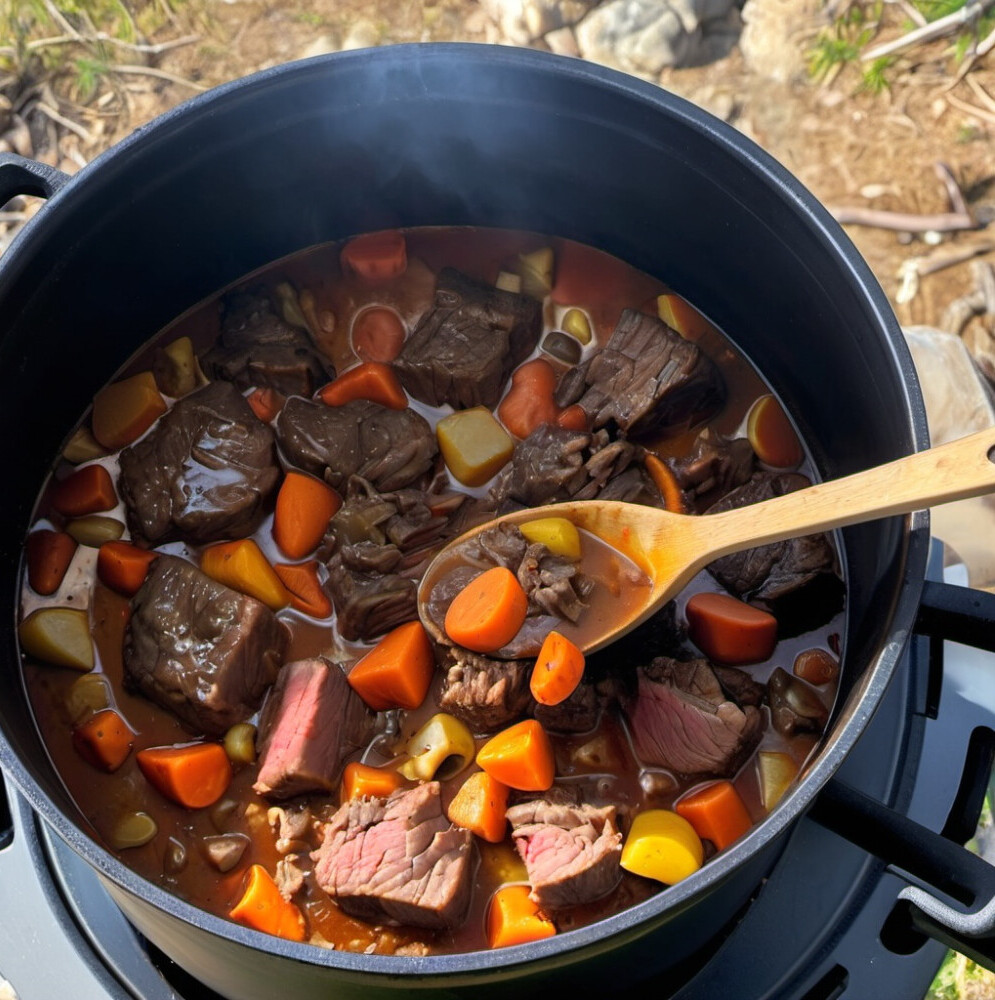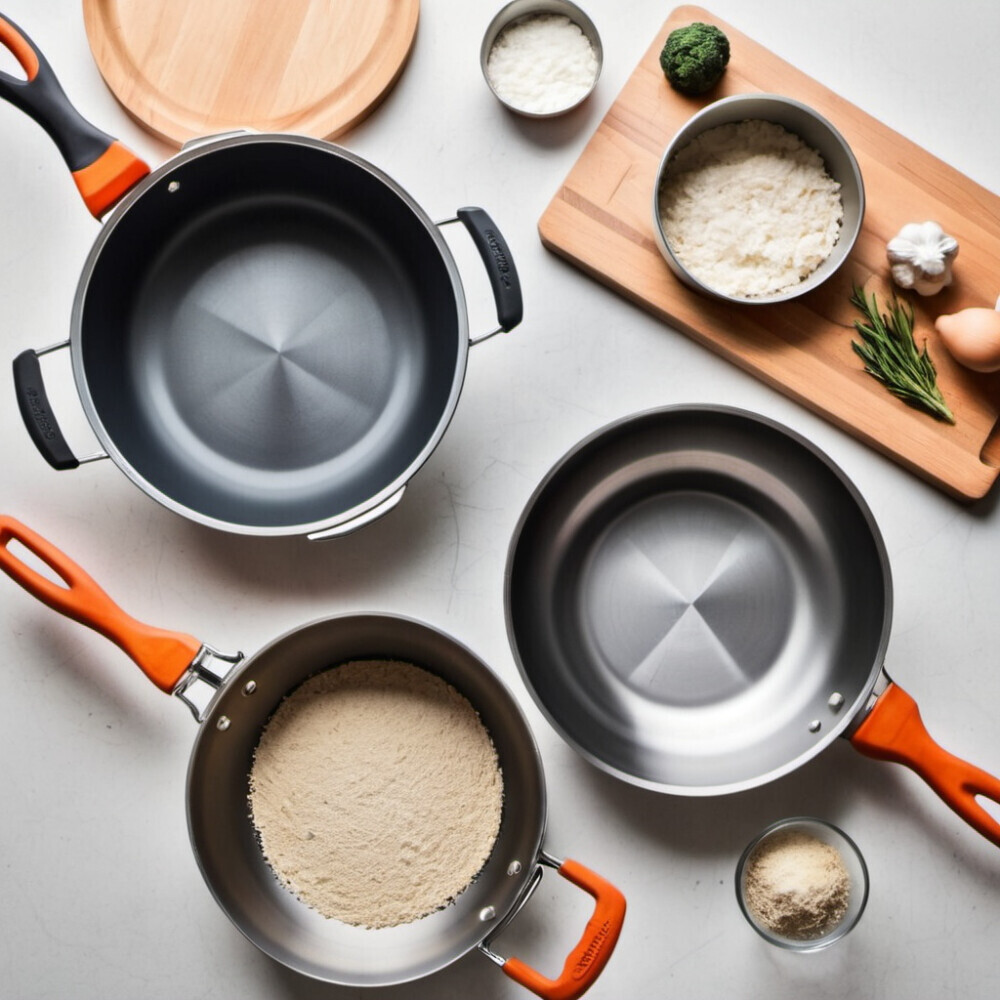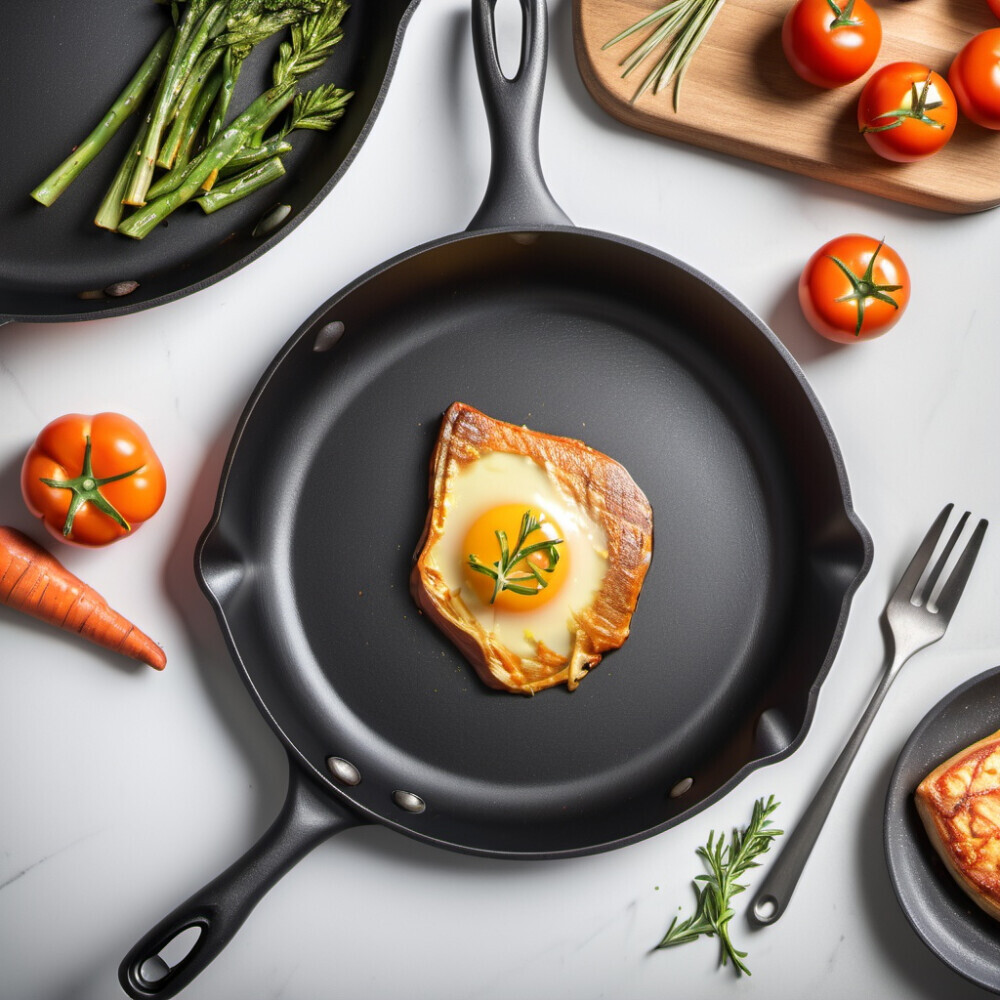This blog post contains affiliate links. If you click on one of these links and make a purchase, I may receive a small commission. This commission comes at no additional cost to you. I only recommend products or services I use and believe will be helpful for my readers.
Getting the right cookware set is more than just picking up what’s on sale. It’s about finding the tools that make cooking easier, more efficient, and even more fun. There’s a good chance you spend a fair bit of time in the kitchen, and having quality stuff on hand truly changes the game.
Now, with so many options at our fingertips, making sense of it all might seem like trying to navigate a maze blindfolded. What kind of material should you go for? Is nonstick really necessary? Does the brand name actually matter? These are the questions that may pop up as you peruse the cookware aisle.
The goal here is to break it all down into bite-sized, easy-to-understand info that helps you feel confident about upgrading your kitchen arsenal. This guide is your trusty roadmap to explore the dazzling world of pots and pans without getting overwhelmed by all those shiny surfaces and endless features.
Cookware isn’t just about what looks pretty in the cupboard; it’s your partner in crafting delicious meals, whether you’re just scrambling eggs or baking a masterpiece. This isn’t just shopping – it’s about investing in something that could stick by your side for years. Sit tight as we unravel the essentials and make the cooking journey an adventure filled with flavor.
Understanding Your Cooking Needs
Getting started on picking the best cookware really begins with you – how you cook, what you cook, and how often you’re serving up those culinary masterpieces. Knowing what you need helps cut through the clutter of options out there.
Think about how often you make meals at home. If you’re more of a weekend warrior, maybe you don’t need as many pieces. On the other hand, if you’re someone who’s cooking every day, it makes sense to invest in a set that covers all bases.
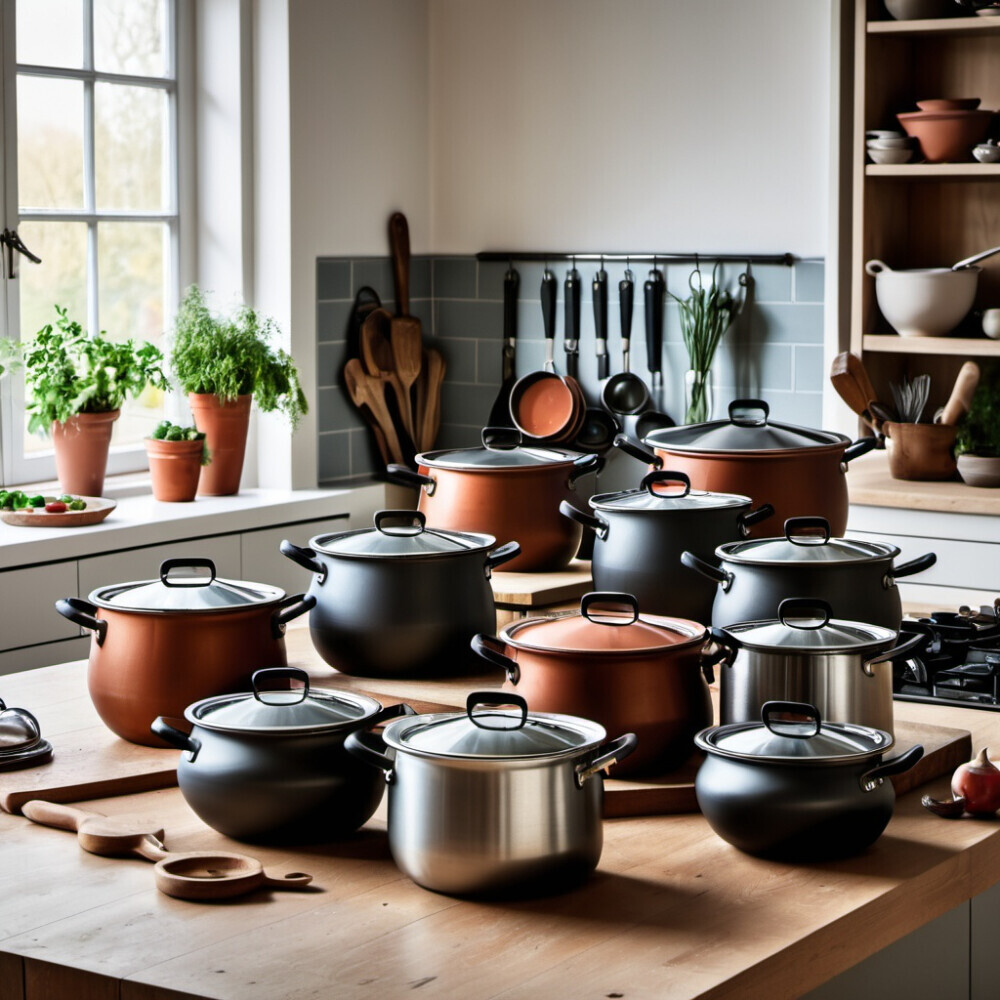
Consider the types of dishes you love to whip up. Big fan of soups and stews? A robust stockpot might be non-negotiable. Love creating stir-fries, pronto? You’ll want a reliable nonstick pan that can handle the heat. Essentially, prioritize what’s going to support the meals you actually prepare.
Beyond just types of dishes, think about the number of people you’re usually cooking for. If you’re often feeding a crowd, larger capacity cookware with multiple pans at play might be your best bet. If it’s just you and maybe a partner or roommate, a couple of versatile pieces might be all you need.
It’s also worth considering any existing cookware you love. Do you have a piece that’s been handed down through generations? Maybe you don’t need to replace it, but instead, build around it.
Getting this clarity helps streamline your selection process, letting you focus on what complements your cooking style and avoids gathering clutter in your cabinets.
Decoding Cookware Materials: Pros and Cons
When you’re standing in front of a wall full of cookware, the materials it’s made from might seem like just another detail to gloss over. But picking the right material can seriously affect how you cook and what you cook.
Stainless steel is a popular choice because it’s tough and doesn’t rust, plus it’s often dishwasher safe. It’s fantastic for browning and deglazing meat because it can handle high heat. But remember, stuff can stick without proper technique, so there’s a bit of a learning curve.
Cast iron has been a kitchen favorite forever, and for good reason. It retains heat like nobody’s business, making it perfect for dishes that need a steady temperature. Great for oven use too. The downside? It’s heavy and needs regular seasoning to keep it at its best.
Got a delicate touch in the kitchen? Nonstick cookware might be your jam. Perfect for low-oil cooking and easy cleanup, but you need to treat it with care. Stick to medium heat and avoid metal utensils to keep that coating intact.
Copper cookware is the rockstar of heat conduction, heating up super fast and adjusting just as quickly. Giving you amazing control over your cooking. It’s a bit high maintenance, requiring regular polishing to keep that gleam.
Aluminum’s known for being budget-friendly and a great conductor of heat. However, pure aluminum can react with acidic foods, so most options come coated with something else, like stainless or nonstick, for safety and ease of use.
Picking the right material can make your cooking experience smoother and more enjoyable, so it’s worth taking a moment to think about what fits your style best.
The Nonstick Debate: Is It Right for You?
When you start shopping for cookware, nonstick options probably pop up a lot, thanks to their rep for making cooking and cleanup a breeze. But is nonstick really the way to go for everybody? Let’s break it down to see if it fits your style.
Nonstick is a dream for cooking foods that tend to stick, like pancakes or eggs. You’ll need less oil, which can help if you’re watching those calories. Plus, who doesn’t love a pan that cleans up with just a quick rinse?
That said, nonstick does come with its own set of guidelines. High heat can damage the coating, reducing its slick magic over time. You’ll want to avoid metal utensils too, as they can scratch and ruin the surface. Remember to check the label to see if your nonstick can hold up in the oven or the dishwasher.
There’s also a bit to consider about the materials involved in nonstick coatings. Most pans use Teflon, but newer versions are often PFOA-free, making them safer and friendlier to the environment.
Some people might skip nonstick altogether if they’re into cooking techniques that involve browning or fond making, as nonstick doesn’t offer the same results as other materials like stainless steel.
So, is nonstick right for you? If you’re all about the ease and quick cooking with minimal mess, and you’re cool with keeping an eye on the heat, then go for it. But if you’re looking to master searing or need something super durable, mix nonstick with other materials to cover all your bases.
Brand Analysis: Finding a Trustworthy Cookware Manufacturer
In the world of cookware, the brand name can sometimes feel like a badge of trust. But does it actually matter when you’re picking a set? Absolutely, as long as you know which brands are known for delivering quality over just flashy marketing.
Tons of brands are vying for your kitchen real estate, so diving into a bit of research about popularity and reputation can save you a headache. Look for brands that have a track record of reviews singing praises about durability and customer service. These are hints that the company stands by its products.
Some big names in the cookware realm like All-Clad, Le Creuset, and T-fal have cultivated loyal fan followings for their consistency in quality and innovation. It’s also a plus if they’re transparent about the materials used and the technology behind their products.
Also, keep an eye on what kind of warranty they offer. A strong warranty program shows the brand has faith in their product’s longevity and performance.
Don’t just spring for the highest price tag assuming it’s the best. Just because a brand charges more doesn’t mean it’s worth it. Sometimes lesser-known brands offer just as impressive performance without the markup. Diving into user reviews, and checking for mentions of customer-support experiences can provide insights that marketing doesn’t.
Ultimately, choosing the right brand involves a bit of investigating and prioritizing what’s important for you, whether it’s about style, innovation, or long-lasting performance.
Evaluating Quality: Craftsmanship and Durability
When it comes to cookware, quality is king. You want stuff that’s going to last, not just look good on the stovetop for a hot minute. So, what should you be checking out to make sure you’re getting the real deal?
Weight is a good indicator. Heavier cookware often means thicker material, which usually means better heat distribution. But don’t go so heavy it becomes a workout just to get your pan from cabinet to stove!
Construction details are next on the checklist. Does the pan have riveted or welded handles? Riveted is generally stronger and more reliable. Check the base — a bonded or layered base tends to offer stability and even cooking.
Now, take a peek at the finish. Stainless steel should be shiny without visible seams; nonstick should be smooth and free from bumps.
While you’re doing your checks, see if the pan feels balanced in your hand. Uneven weight can make cooking awkward, and who wants to wrestle with cookware?
The test of time also counts. Brands that offer warranties or guarantees on their cookware often signal confidence in their longevity. If they’re promising it’ll last a lifetime, chances are they mean it.
Remember, it’s these tiny details that add up to big performance and durability in the kitchen, making sure your investment really pays off in the long run.
Pricing 101: Balancing Cost with Value
Diving into cookware can feel like stepping into a casino, with prices all over the map. But the key isn’t about spending big; it’s about getting the best bang for your buck.
Setting a budget early on can help steer you in the right direction. It’s easy to get swept up in the allure of high-end options, but quality doesn’t always mean breaking the bank.
Understand what features matter most to you. Sometimes spending a little more on a versatile piece you’ll use every day makes more sense than splurging on a whole set that partly sits idle.
Comparing different brands and their price points is a great strategy. Check if the higher price tag on a set is due to added pieces or genuine quality improvements.
Keep your eyes peeled for sales and discounts. Retailers often slash prices on cookware during holiday seasons, making it a perfect opportunity to snag good deals.
Don’t overlook second-hand options either. Some people sell top-quality cookware still in good condition, giving you high value for less.
Ultimately, the aim is to find cookware that checks your needs without leaving you with buyer’s remorse. It’s all about smart spending and understanding what you really need in your cooking space.
Maintenance and Care for Longevity
You’ve picked out the perfect cookware. Now, keeping it in prime shape is just as important as choosing it in the first place. With a bit of love and care, your cookware can stay in tip-top condition for years on end.
Different materials require their own style of TLC. Cast iron, for instance, loves a coat of oil after cleaning, preventing rust while building up that coveted seasoning. Don’t even think of tossing it in the dishwasher or letting it air dry!
Nonstick surfaces, on the other hand, prefer low and slow cleaning with gentle sponges to keep them scratch-free. Avoid the temptation to cook on high heat, which can break down the coating over time. And leaving it unattended on the stove? That’s a no-go too.
Stainless steel can handle a bit more tough love, but avoiding harsh abrasives will prevent unwanted scratches. A mixture of vinegar and water can shine it right up if it gets cloudy.
Copper cookware will need regular polishing to maintain its beauty. If coatings start to wear, it’s crucial to address them early before they lead to more significant problems.
Whatever material you have, drying everything thoroughly before storing is a universal rule—moisture is the enemy of cookware durability. With these easy steps, keeping your cookware set looking shiny and new will be just another part of your cooking routine.
Conclusion: Making an Informed Decision
You’ve journeyed through the essentials of picking the right cookware, armed with knowledge that sets you up for smart choices. With an understanding of your cooking habits and knowing what your kitchen demands, you can sort out the must-haves from the nice-to-haves.
From deciphering materials to pondering brands and weighing costs against benefits, you’ve got the tools to measure what aligns with your style and kitchen goals. This is your chance to curate a cookware collection that not only serves your culinary needs but also enhances your cooking joy.
Finding the right match isn’t just about the immediate thrill of new kitchen gear; it’s about forming a partnership that elevates your meals and makes every cooking adventure exciting and hassle-free.
So, step forward with confidence, experiment with materials, explore brands, and embrace the process. Your perfect cookware set is out there, ready to complement your kitchen’s rhythm.
-
Spice by Tia Mowry Savory Saffron 18 Piece Round Fine Ceramic Dinnerware Set in Golden Blue
-
Spice by Tia Mowry Savory Saffron 18 Piece Round Fine Ceramic Dinnerware Set in Golden Red
-
St Patricks Day Decor- Artificial Flowers 3 PCS with Vase, Leprechaun St Patricks Day Decorations for Home, Living Room, Dining Table, Bedroom, Shamrock Flowers Gifts for Women
-
St Patricks Day Decorations Gnome Plush Home Table Ornament Decor Green Irish Faceless St Patricks Day Gnome for St Patricks Day Gifts Swedish Tomte Leprechaun St Patricks Day Gnomes-7
-
Vanilla Bean Scented Wax Melts
-
Wooden Bathroom Storage Cabinet with Sliding Barn Door
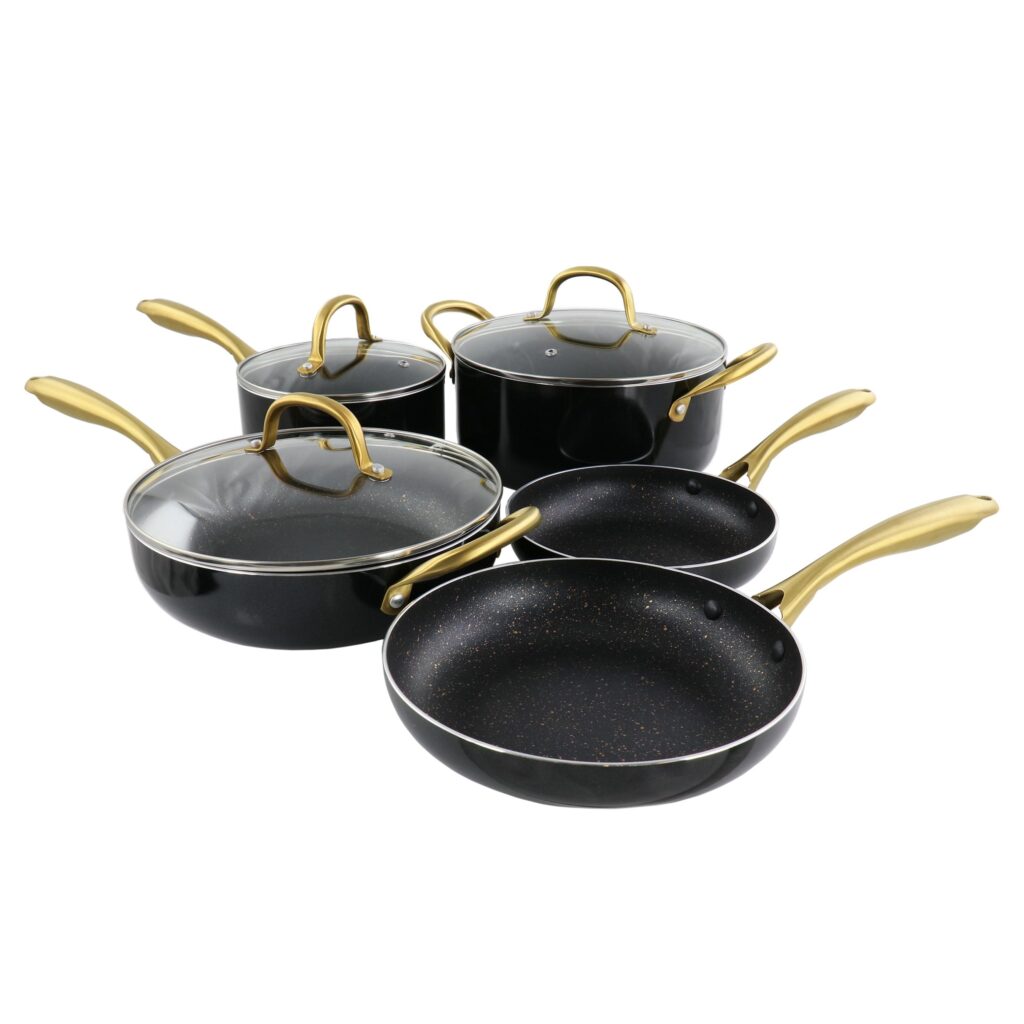
Gibson Home Ellsworth 12 Piece Aluminum Nonstick Cookware Set
Gibson Home Ellsworth 12 Piece Aluminum Nonstick Cookware Set
Have all your kitchen essentials ready with this Gibson Home Ellsworth 12 Piece Aluminum Nonstick Cookware Set. The set includes one dutch oven with lid, one saute pan with lid, one saucepan with lid, one 9.5″” frying pan, one 8″” frying pan, and four felt pan protectors. This set has everything you need to start cooking in your k…
New arrivals
-
FreshDaddy VacSeal Canister3pc
-
Matte Black Canister Wall Light
-
St Patricks Day Decor- Artificial Flowers 3 PCS with Vase, Leprechaun St Patricks Day Decorations for Home, Living Room, Dining Table, Bedroom, Shamrock Flowers Gifts for Women
-
St Patricks Day Decorations Gnome Plush Home Table Ornament Decor Green Irish Faceless St Patricks Day Gnome for St Patricks Day Gifts Swedish Tomte Leprechaun St Patricks Day Gnomes-7
-
Fat Tire Folding Electric Bike, 48V & 624Wh Lithium Removable Battery, Peak 1100W Brushless Motor, Max Speed 28Mph, M5 Large LCD Display, Suspension, Step-Over/Thru Frame
